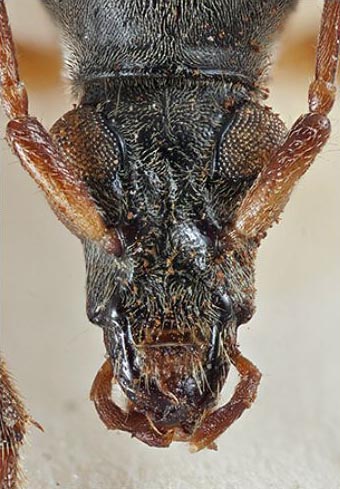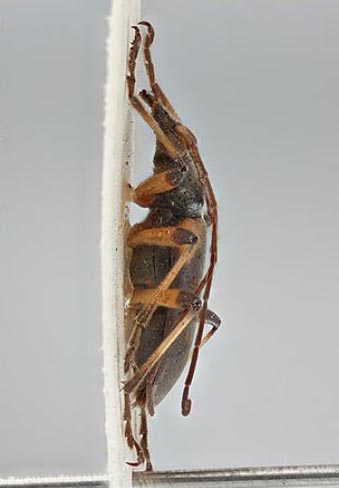|
Dorcasominae Classification
Selected References to Larvae Specimens |
 Aedoeus geniculatus Waterhouse, 1880; dorsal lectotype specimen Cerambycidae:Dorcasominae Photograph © N.P. Lord  Aedoeus geniculatus
Waterhouse, 1880; head lectotype specimen Cerambycidae:Dorcasominae Photograph © N.P. Lord  Aedoeus geniculatus
Waterhouse, 1880; lateral lectotype specimen Cerambycidae:Dorcasominae Photograph © N.P. Lord |

